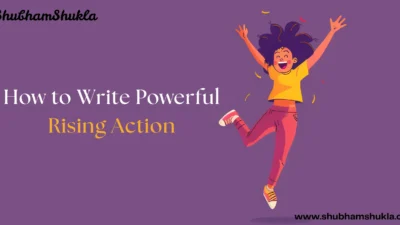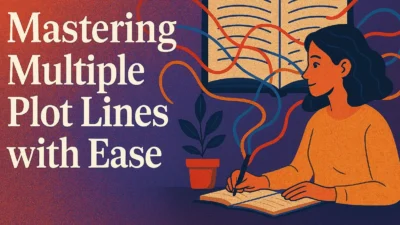We’ve all been there. You’re reading through your draft, coffee in hand, when something suddenly doesn’t add up. A character knows something they shouldn’t. A big twist relies on a forgotten detail. Or—oops—that side character vanished three chapters ago and never returned. Yep, you’ve just stumbled into a plot hole. Plot holes can feel like the bane of storytelling, especially when you discover them late in the game.
But here’s the good news: plot holes are common, and they’re fixable. Even the most celebrated authors and blockbuster films have them.
- What Exactly Is a Plot Hole?
- Why Plot Holes Sneak In (Even When You Plan Ahead)
- In My Own Experience, I Found That…
- Common Plot Holes (And How to Fix Them Without a Rewrite Meltdown)
- Tools to Help You Catch and Repair Plot Holes
- Give Yourself Grace (Even Bestsellers Get It Wrong)
- Final Thoughts: Every Crack Can Be Repaired
- FAQ: Plot Holes and How to Fix Them
The trick is knowing how to find them, how to fix them, and—ideally—how to avoid them next time.So grab that notebook (or laptop), and let’s chat about plot holes and how to fix them without losing your mind—or your story’s momentum.
You may also read: How to Introduce a Character (Without Losing Your Reader)
What Exactly Is a Plot Hole?
Let’s break it down. A plot hole is any inconsistency, contradiction, or logical gap that disrupts the internal logic of your story. It’s the “wait, that doesn’t make sense” moment that can jar readers out of your fictional world.
Here are a few classic types:
- Continuity errors – A character’s eye color changes, or a pet disappears for no reason.
- Unexplained events – A character escapes danger with no setup or explanation.
- Contradictory motivations – A hero suddenly helps the villain without justification.
- Timeline issues – Two events overlap when they shouldn’t.
- Missing cause and effect – Big consequences with no believable triggers.
And they’re not just for beginner writers. Even epic franchises like Harry Potter and Game of Thrones have their fair share of infamous gaps. (Remember when time travel fixed everything… until it didn’t?)
You may also like: Small Roles, Big Impact: Writing Scene Characters That Matter
Why Plot Holes Sneak In (Even When You Plan Ahead)
The creative process is messy. Characters evolve. Subplots shift. Sometimes we write a scene and change the ending later—forgetting to go back and tweak the beginning. Other times, we’re too close to the story to see what’s missing.
That’s why plot holes and how to fix them go hand-in-hand with revision. First drafts are where the magic happens. Revisions are where the logic gets stitched together.
In My Own Experience, I Found That…
…the best way to catch plot holes is to step away from the manuscript for a bit. Seriously. Distance brings clarity. Once, I had a subplot involving a side character’s mysterious disappearance.
I thought it was wrapped up nicely—until a critique partner asked, “Wait, did he ever come back?” And he hadn’t. Whoops.
What saved me was doing a full scene-by-scene breakdown. I created a simple spreadsheet with columns for character presence, key events, motivations, and setups/payoffs.
That’s when the holes popped out like red flags. My advice? Don’t be afraid to get surgical with your story. If something doesn’t track, dig into the why, and be honest with yourself. You’re not “ruining” anything—you’re strengthening it.
You may also like: The Power of Three: Writing with 3 Main Characters That Truly Shine
Common Plot Holes (And How to Fix Them Without a Rewrite Meltdown)
Let’s look at a few frequent offenders and how to patch them up:
1. The Vanishing Character
Fix: Bring them back—or write them out with purpose. Give closure. Even a one-line update like “he’d left town before the storm” can do wonders.
2. Motivations That Don’t Make Sense
Fix: Revisit the emotional arc. Maybe your villain needs a clearer grudge. Maybe your hero’s decision needs a stronger push. Add a flashback, a conversation, or a single sentence to ground it.
3. Magical (or Tech) Rules That Change Mid-Story
Fix: Reestablish the rules. Maybe your magic system lets the protagonist teleport—but not to locked spaces. Drop a reminder into dialogue or an early training scene. Readers are forgiving—if you stay consistent.
4. Coincidences That Solve Everything
Fix: Avoid “deus ex machina.” If a solution comes out of nowhere, try weaving it into earlier scenes. Plant seeds. Make it feel earned.
5. Conflicting Timelines
Fix: Map out a clear timeline of events. Color-code if needed. You’d be amazed at how much clarity a visual calendar brings.
Each of these fixes doesn’t require rewriting the whole book. Often, just a tweak here and a sentence there makes all the difference.
You may also read: Villain vs Antagonist: Why Understanding the Difference Can Level Up Your Storytelling
Tools to Help You Catch and Repair Plot Holes
If you’re overwhelmed, don’t worry—you’re not alone. Here are a few tools and techniques writers swear by:
- Reverse outlining – After writing, go back and outline what you actually wrote. This helps spot gaps and logic jumps.
- Beta readers and critique groups – A fresh pair of eyes will catch what you missed.
- Story bibles – Track character details, world rules, timelines, and subplots.
- Scrivener or Notion – Great for organizing large stories with many threads.
Remember, plot holes and how to fix them is less about perfection and more about clarity. Your story doesn’t have to be airtight—it just needs to feel believable in the world you’ve created.
Give Yourself Grace (Even Bestsellers Get It Wrong)
Before you tear your manuscript apart, take a breath. Go easy on yourself. Plot holes aren’t a sign you’re a bad writer.
They’re a sign you’re writing something complex. You’re weaving characters, arcs, stakes, and emotions. That’s hard. Of course, things slip through.
J.K. Rowling, George R.R. Martin, Suzanne Collins—none of them wrote perfect plots. But what keeps readers invested isn’t perfect logic—it’s emotional truth.
So be kind to yourself. Your story’s worth fixing.
Final Thoughts: Every Crack Can Be Repaired
Plot holes happen. They’re part of the storytelling journey. But here’s the silver lining: every time you fix one, you sharpen your skills. You become a more attentive reader and a more intentional writer.
So don’t panic when you find one. Celebrate it. It means you’re looking closer. You’re making your story stronger. And your readers? They’ll thank you for it.
FAQ: Plot Holes and How to Fix Them
Q: Do all plot holes need to be fixed?
Not always. If it’s tiny and doesn’t affect the reader’s trust in your world, you might let it slide. Focus on the big ones first—especially those that break logic or emotional flow.
Q: What’s the easiest way to spot plot holes?
Ask “why?” and “how?” after every major event. If something happens without clear setup or payoff, it might be a hole. Also—get a beta reader!
Q: Can plot holes be fixed without rewriting the whole book?
Absolutely. Most fixes involve adding clarity, motivation, or connective tissue—not gutting your story.
Q: Is it okay if readers point out plot holes after publication?
It happens! You can note it, laugh about it, or even address it in later editions. What matters is staying humble and open to growth.



